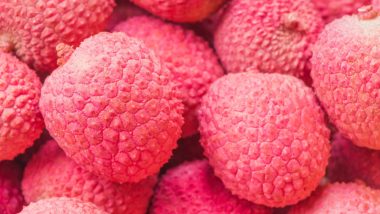Acute Encephalitis Syndrome (AES) has gripped Muzaffarpur, claiming more than 100 lives in the Bihar town. The rising incidences of death has made the Bihar government launch an investigation into the situation. According to Ashok Kumar Singh, the deaths have been caused due to a sudden loss of glucose in the blood. Although the exact cause has not been confirmed, it’s widely believed that lychees or litchis are responsible. However, it’s not the first time Muzaffarpur, which happens to be the lychee bowl of India, has experienced encephalitis epidemics. Similar episodes were seen in the town in 2014, 2015, 2016 and 2017.
The available literature on the topic of litchi deaths pins the blame on hypoglycin A, a naturally-occurring amino acid found in lychees. Another says that pesticides sprayed on the fruit could be the cause.
Given that the lychee-associated encephalitis epidemic has only been heard of in Muzaffarpur, experts believe that factors other than lychee could be causing the spate of brain inflammation. However, Bihar is not the only place where the fruit has wreaked havoc.
China
In 2000, lychees were associated with encephalitis in China. Lychee a fragrant summer fruit with a rough, pink, peel-able skin finds its origins in China where it is widely cultivated and consumed. A 2017 Lancet study on medical literature from the country showed that there were 247 cases of encephalitis in the country between 1960 and 2017.
Eleven percent of these cases were fatal. In these 57 years, children between the age groups of one and nine accounted for 77 percent of the cases. The victims developed the central nervous system disease after consuming the fruit.
They developed the symptoms less than an hour after consuming the lychees. The victims had shown signs of convulsions, unconsciousness, coma, weakness, clamminess of limbs, lethargy, fever, vomiting, screaming and facial cyanosis.
The study showed that 98 percent of the victims had developed hypoglycaemia or low blood sugar.
Since 1995, the Chinese government has been wary of the dangers of lychee. Print publications and awareness campaigns have worked hard ever since to warn the public about the toxic effects of litchi.
The situation in China was also mitigated by timely medical intervention. Since 2000, a total of 48 adult cases of lychee disease was reported in the country.
The primary line of treatment was administering emergency glucose in 50 percent of the cases. And out of the 48 who were sick, 47 survived.
Bangladesh
In 2017, a study published in the American Journal of Tropical Medicine and Hygiene linked the deaths of 13 children in Bangladesh in 2012 to lychees. However, the reason was pesticides sprayed on the fruits.
The Bangladeshi government’s disease monitoring agency IEDCR reported that the chemicals, including the controversial endosulfan, were the cause of deaths.
The lead author of the study M Saiful Islam told bdnews24.com: “Our investigation suggested the seeds might not be the cause as the seeds are not eaten in Bangladesh and the deaths in 2012 were most likely due to an exposure to multiple, highly toxic agrochemicals.”
Contradicting results of studies have stymied government efforts to prevent the encephalitis outbreak. But to stay on the safer side, it is advised to not consume lychees (especially if unripe) on an empty stomach. Children who are particularly at risk shouldn’t be given lychees to eat if they have missed the previous meal.
(The above story first appeared on LatestLY on Jun 18, 2019 02:45 PM IST. For more news and updates on politics, world, sports, entertainment and lifestyle, log on to our website latestly.com).













 Quickly
Quickly


